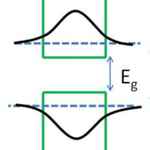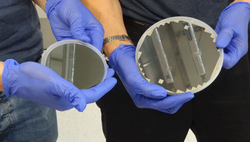Why cubic zincblende GaN?
Blue light-emitting diodes for white lighting are based on wurtzite InGaN heteroepitaxial systems. However, difficulties in achieving green emission by increasing the indium content results in reduced quantum efficiencies due to higher defect densities, and the internal electric field present in wurtzite nitrides limits efficient carrier recombination. Cubic nitride films do not have this electric field, are suitable for silicon (001) electronics integration, have a narrower bandgap and can have a higher p-type conductivity than hexagonal wurtzite GaN, resulting in the need for less indium and magnesium in the active and p-type layers respectively.
However, the cubic nitride structure is metastable and growth has until recently been shown to form mixed-phase films with high defect densities and poor emission properties.
Material Research
With funding through an EPSRC grant, we are collabroating with Dr. David Binks and his Photon Physics research group at Manchester University to take a close look at the fundamental growth, microstructure, optical and electrical properties of cubic GaN that will determine this fascinating material's suitability for the fabrication of a new generation of LEDs.
Industrial Colaborations
In collaboration with Kubos Semiconductors, we have successfully grown cubic GaN on 3C-SiC substrates. With funding through an Innovate UK grant, we plan to grow together prototype green LEDs and related devices, with processing, packaging and steps towards commercialisation.




